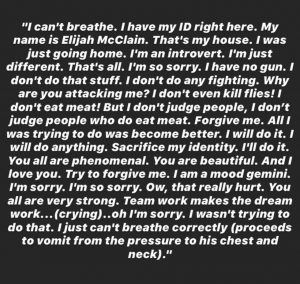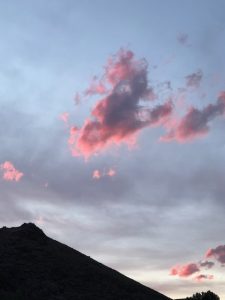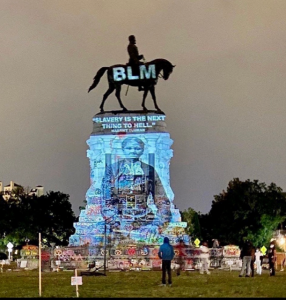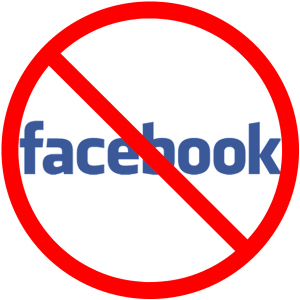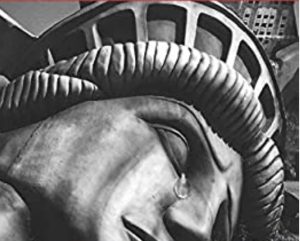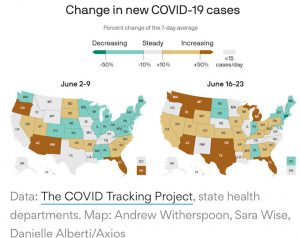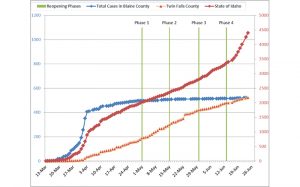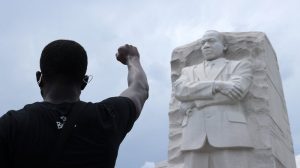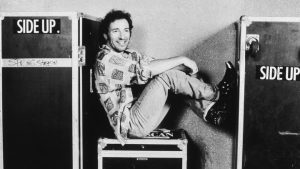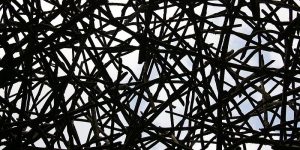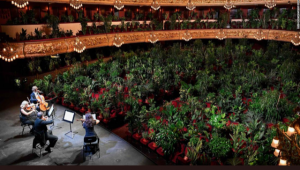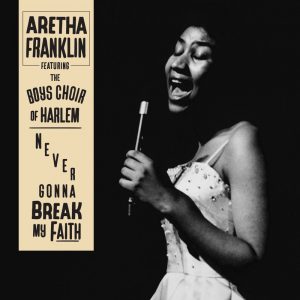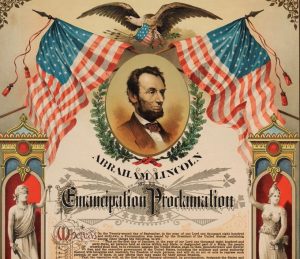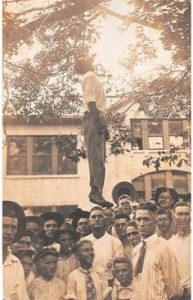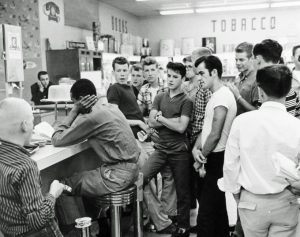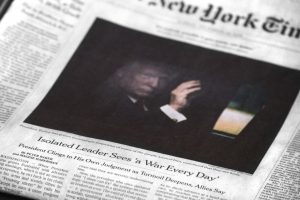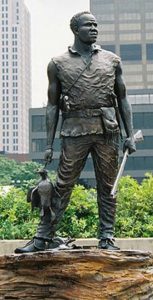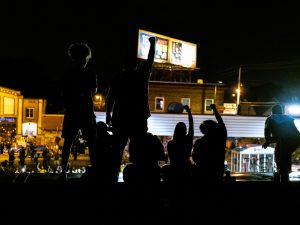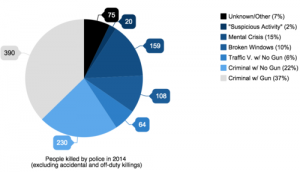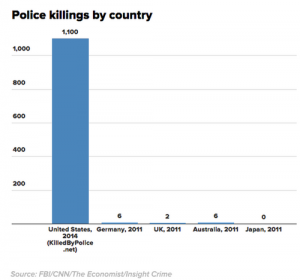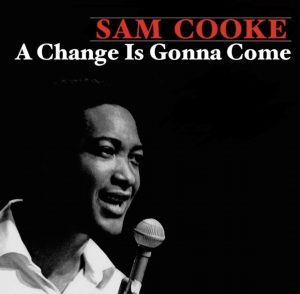I can’t stop thinking about Elijah.
June 30, 2020Remember his name. Say his name.
Elijah McClain.
Yes. Absolutely. #Justice for Elijah. And with every thought, every chant, every protest, remember, Elijah should still be alive. He was 23.
His mom: “He was a responsible and curious child … who could inspire the darkest soul.”
In the weeks following Elijah’s death last summer [2010], his mother, Sheneen, would sit in her car and cry for up to three hours at a time. Now it’s down to an hour and a half. ““The wind will blow, and I’ll think about him.” [Denver Post]
Elijah was known as a gentle soul, a massage therapist who played violin for shelter kittens on his lunch break in his hometown of Aurora, Colorado, because he thought the animals were lonely. He taught himself to play. “He was ‘quirky, a pacifist, a vegetarian, enjoyed running, and known to put a smile on everyone’s face.’
When a demonstrably tender and sweet soul like Elijah McClain is killed from a police encounter and no wrongdoing is found, it’s long past time to examine the rules that govern the entire system. No one in their right mind can say this young man shouldn’t be alive right now, playing violin for lonely kittens on his lunch hour. [Upworthy]
Gov. Jared Polis ordered Attorney General Phil Weiser to serve as a special prosecutor in a new investigation into Elijah’s death.
Elijah’s last words.
grace.
June 27, 2020‘I lack the peace of simple things. I am never wholly in place. I find no peace or grace. We sell the world to buy fire, our way lighted by burning men, and that has bent my mind and made me think of darkness and wish for the dumb life of roots.’
-Wendell Berry
[Sun Valley, Idaho]
One perpetual wave.
U P D A T E
WASHINGTON POST/Thursday, June 25th
State health departments reported 38,115 new infections on Wednesday, the highest single-day caseload in the United States since the pandemic began. As for the total, true number of infections, CDC Director Robert Redfield said Thursday: “Our best estimate right now is that for every case that’s reported, there actually are 10 other infections.”
The new spike was caused by a rush to reopen without proper safety measures in place, infectious-disease experts say, and the push to do so, even as cases climb, sends a dangerous and inaccurate message.
AXIOS
‘A nationwide crisis, made worse by a vacuum of political leadership, threatening to overwhelm hospitals.’
The pandemic is getting dramatically worse in almost every corner of the U.S., Axios health care editor Sam Baker and visual journalist Andrew Witherspoon report.
This is the grimmest map in the eight weeks since Axios began tracking the state-by-state change in new cases.
-
- Nationwide, cases are up 30% compared to the beginning of this month
- Dramatically worsening outbreaks in several states are beginning to strain hospital capacity — the same concern that prompted the nationwide lockdown in the first place.
- Over half the country — 26 states — has seen its coronavirus caseloads increase over the past week.
Trying to unpack this logic:
Governor Brad Little, (R) Idaho, will not mandate masks because “compliance would be terrible.”
Boise (Ada County) COVID numbers, like in Arizona, California, Texas, and Florida, continue to exponentially increase.
From Boise State Public Radio [KBSX] reporter Heath Druzin:
On the day the governor says Idaho is not meeting its #COVID19 goals, and in the midst of a local outbreak, just saw a @CityOfBoise employee pull up in a city car and walk into a gas station store with no mask. So that’s how seriously we’re taking the pandemic right now.
More from Heath:
Idaho saw its highest number of lab-confirmed COVID-19 cases in a single day Wednesday, with 223 and another 20 probable cases. There was also an additional death, bringing the state’s total to 90.
Wednesday’s total includes 101 cases in Ada County, which is in the midst of a spike, with some tied to downtown bars where patrons did not practice physical distancing. In response, Central District Health has ordered bars in the county to close again and the county to return to Phase 3 of reopening.
There have been 908 cases over the last seven days, representing by far the worst week for COVID-19 infections in Idaho since the pandemic began in March. In addition, Idaho Gov. Brad Little announced the first confirmed infection of an inmate at an Idaho correctional center.
https://www.boisestatepublicradio.org/post/idaho-sees-highest-one-day-covid-19-total
Vacation bookings are up in the Mountain West with folks looking for outdoor escape from their own dramatically increasing COVID numbers. Guides report a record increase in bookings. From Eye On Sun Valley:
Silver Creek Outfitters’ three dozen fishing guides have seen a record number of requests for guided fishing outings this summer from out-of-state visitors eager to escape coronavirus lockdowns.
While grateful for the extra business, it does present a conundrum for some.
“Terry Ring has put a whole lot of precautions in place and fly-fishing is an activity in which you can social distance,” said fishing guide Bob Knoebel. “But, while I feel confident with most of the people in the valley, I’m not as comfortable with people from outside the valley because I have no idea where they’ve been and who they’ve been with.
From CDC website. (A reminder to consider the source.)
“Do we need to get a flu vaccine earlier this year (i.e. July/August)?
While the Advisory Committee on Immunization Practices has not yet voted on the flu vaccine recommendations for 2020-2021, CDC does not anticipate a major change in the recommendation on timing of vaccination. Getting vaccinated in July or August is too early, especially for older people, because of the likelihood of reduced protection against flu infection later in the flu season. September and October are good times to get vaccinated. However, as long as flu viruses are circulating, vaccination should continue, even in January or later.
Will there be changes in how and where flu vaccine is given this fall and winter?
How and where people get a flu vaccine may need to change due to the COVID-19 pandemic. CDC is working with healthcare providers and state and local health departments to develop contingency plans on how to vaccinate people against flu without increasing their risk of exposure to respiratory germs, like the virus that causes COVID-19.
Some settings that usually provide flu vaccine, like workplaces, may not offer vaccination this upcoming season, because of the challenges with maintaining social distancing. For more information on where you can get a flu vaccine, visit www.vaccinefinder.govexternal icon.”
CNBC
The National Institutes of Health has been fast-tracking work with biotech firm Moderna on a potential vaccine to prevent Covid-19, which has infected more than 6.28 million people worldwide and killed at least 375,987, according to data compiled by Johns Hopkins University.
Dr. Anthony Foci said earlier this month that the biotech company expects to enroll about 30,000 individuals when it begins a phase 3 trial in July. He said there are at least four trials for potential vaccines that he is either directly or indirectly involved in.
Fauci said that by the beginning of 2021 “we hope to have” hundreds of millions of doses.”
When asked whether scientists will be able to find an effective vaccine, Fauci said he’s “cautiously optimistic,” adding that “there’s never a guarantee.” He cautioned “it could take months and months and months to get an answer” before scientists discover whether the vaccine works.
U.S. officials and scientists are hopeful a vaccine to prevent Covid-19 will be ready in the first half of 2021 — 12 to 18 months since Chinese scientists first identified the coronavirus and mapped its genetic sequence.
It’s a record-breaking time frame for a process that normally takes about a decade for an effective and safe vaccine. The fastest-ever vaccine development, mumps, took more than four years and was licensed in 1967.
However, scientists still don’t fully understand key aspects of the virus, including how immune systems respond once a person is exposed. The answers, they say, may have large implications for vaccine development, including how quickly it can be deployed to the public.
C-SPAN
Dr. Fauci stestifying earlier this week in Washington D.C. on the federal pandemic response.
#MustListen
NPR
A Call for Reparations: How America Might Narrow the Racial Wealth Gap
Pulitzer Prize-winning journalist Nikole Hannah-Jones on the racial wealth gap — and why she believes it’s time for reparations. Her new piece published in New York Times magazine.
The killing of George Floyd has ignited protests and inspired conversations — and changes — across the globe. But New York Times Magazine writer Nikole Hannah-Jones says more needs to be done to address America’s racial wealth gap.
“Very few Americans have created all of their wealth on their own; it’s passed down through generations and then built upon,” Hannah-Jones says. “Black Americans never really had a chance to do that.”
Hannah-Jones traces the wealth gap to slavery, and the fact that enslaved people were not allowed to own property. She notes that the legalized segregation and racial terrorism that followed slavery exacerbated the problem and “prevented generation after generation of Black Americans from acquiring the type of wealth or foothold in the economy that allows you to live a life that is much more typical of white Americans.”
Hannah-Jones won a Pulitzer Prize for creating the 1619 project at The New York Times, which tracks the legacy of slavery. Her latest article for the Times Magazine, What is Owed, makes the case for economic reparations for Black Americans.
Nikole Hannah-Jones:
Very few Americans have created all of their wealth on their own; it’s passed down through generations and then built upon. Black Americans never really had a chance to do that.
There are stories of mass starvation of Black people after they had been freed, having to leave the plantation and find shelter in burned out buildings, trying to forage for food in burned-out fields. It was a devastating period for Black people. This country decided that it was going to do nothing, that it owed these people nothing.
“…ultimately a spiritual songwriter.”
June 24, 2020THE ATLANTIC
Bruce Springsteen’s Playlist for the DT Era
“I don’t know if our democracy could stand another four years of his custodianship.”
by David Brooks
Contributing writer at The Atlantic and columnist for The New York Times.
This is a moment of tumult, anger, hope, and social change. At moments such as this, songwriters and musicians have a power to name things and help us make sense of events—artists such as Kendrick Lamar, Janelle Monáe, Tom Morello, Nina Simone, Marvin Gaye, Bob Dylan, and Bruce Springsteen.
It’s been 20 years since Springsteen wrote “American Skin (41 Shots),” a powerful song about the police killing of a black man. I thought it might be a good idea to check in with Bruce, to get his reflections on this moment and on music in this moment. Here’s a slightly edited transcript of our conversation, which took place on June 9.
“…at the heart of our racial problems is fear. Hate comes later. Fear is instantaneous. So in “American Skin,” I think what moves you is the mother’s fear for her son and the rules that she has to lay down so he can be safe. It’s simply heartbreaking to watch a young child be schooled in this way.
The Democrats haven’t really made the preservation of the middle and working class enough of a priority. And they’ve been stymied in bringing more change by the Republican Party. In the age of Roosevelt, Republicans represented business; Democrats represented labor. And when I was a kid, the first and only political question ever asked in my house was “Mom, what are we, Democrats or Republicans?” And she answered, “We are Democrats because they’re for the working people.”
Woody Guthrie- This Land Is Your Land
Cosmology and Nature
Image Credit: Una “rete” di rami all’Arte Sella (Wood and Art in the Forest of Italy)(detail), 2008, Arte Sella, Trento, Italy.
Fr. Richard Rohr:
My friend and fellow CAC teacher Dr. Barbara Holmes has the ability to bear witness to the expansiveness of the cosmos, the major systemic shifts taking place in society, and the small and sacred moments of daily life—all at the same time. Her writing is a poetic and prophetic call for us to wake up and pay attention to everything that is happening around us.
It is time to awaken to self, society, and the cosmos, for none of us has the luxury of sleepwalking through impending cultural and scientific revolutions. In the last sermon that he preached before he was assassinated, Martin Luther King Jr. urged us to “remain awake through a great revolution.” [1] . . .
Up above our heads, there are worlds unknown and a canopy of grace, light, air, and water that supports our survival. Without realizing it, we expend massive amounts of energy to block out the vastness of our universe. This is to be expected, for, in its totality, this information can be more than human systems can take. However, by riveting our attention on the mundane, we filter out the wonder that is available with each breath.
Although we have a fascination with space and the possibility of life in other realms, we steadfastly refuse to respond when the universe invites us to broaden our lines of sight. We are beckoned by blazing sunsets and the pictures returned by powerful telescopic lenses, yet, on any given day, we court a busyness that beguiles us into focusing on the limited perspectives in our immediate space.
Today, scientific information about the universe is increasing exponentially while ethnic and racial balances within the United States are shifting radically. In the scientific realm, the epistemological foundations for hierarchy, dominance, and rationality are crumbling, while proponents of gender, class, [racial,] and sexual equity have found their public voices. . . .
We are not hamsters on a wheel, waiting to fall into the cedar shavings at the bottom of the cage. We are seekers of light and life, bearers of shadows and burdens. We are struggling to journey together toward moral fulfillment. We are learning to embrace the unfathomable darkness where God dwells with enthusiasm that equals our love of light. Physics and cosmology have metaphors and languages to help us awaken to these and other possibilities. . . . We are not just citizens of one nation or another, but of the human and cosmic community.
Awareness is the moment when we rise with eyes crusted from self-induced dreams of control, domination, victimization, and self-hatred to catch a glimpse of the divine in the face of “the other.” Then God’s self-identification, “I am that I am / I will be who I will be” (Exodus 3:14) becomes a liberating example of awareness, mutuality, and self-revelation.
Barbara teaches us that “everything belongs”—from moments of personal awakening, to mind-bending discoveries with the potential to change everything. Growing in awareness of a “Christ-soaked universe” helps us to awaken to wonder and see the divine in all things.
[1] Martin Luther King, Jr., Sermon at the National Cathedral, Washington, D.C. (March 31, 1968). See A Testament of Hope: The Essential Writings and Speeches of Martin Luther King, Jr., ed. James M. Washington (HarperCollins: 1986), 270.
Barbara A. Holmes, Race and the Cosmos: An Invitation to View the World Differently, 2nd ed. (CAC Publishing: 2020), 42, 43, 57.
Encore, please.
Love.
‘Barcelona’s Liceu Opera House reopened its doors for the first time in over three months to hold a concert for an audience of nearly 2,300 house plants.’
Aretha.
June 21, 2020Photo: Legacy Records via AP
AP
‘A never-before-heard solo version of the late Aretha Franklin’s riveting and powerful collaboration with Mary J. Blige about faith and race, 2006’s “Never Gonna Break My Faith,” arrived on Juneteenth.’
-
You can lie to a child with a smiling face/Tell me that color ain’t about a race. …My Lord, won’t you help them to understand/That when someone takes the life of an innocent man/Well they’ve never really won, and all they’ve really done/Is set the soul free, where it’s supposed to be.
♡
Robert Dale Ohlau
3.3.1937-6.15.17
“Avoid providing material for the drama that is always stretched tight between parents and children; it uses up much of the children’s strength and wastes the love of the elders, which acts and warms even if it doesn’t comprehend. Don’t ask for advice from them and don’t expect any understanding; but believe in a love that is being stored up for you like an inheritance, and have faith that in this love there is strength and blessing so large that you can travel as far as you wish without having to step outside it.” -Rilke
‘…the precious gift of choice.’
June 19, 2020Richard Rohr, Center for Action and Contemplation:
Rev. angel Kyodo williams seeks to liberate both the oppressed and the oppressors, which is appropriate as we celebrate Juneteenth in the United States today, to recognize the final day of emancipation from slavery in our nation. In this passage she shares her path to becoming an agent of transformative, peaceful social change.
Rev. williams:
“My formal Zen practice and training were teaching me to find a more restful place that I could abide in within myself despite the chaos and calamity [of] living in an unjust society. . . . It also gave me a way to be in response to sometimes overwhelming situations that could just lead me to a downward spiral of anger and negativity. . . .
The Zen community I eventually became engaged with [the Zen Peacemaker Order] . . . [was] explicitly committed to social action.
I advocated for [a] more balanced approach to fiercely address injustice from a place of empowerment as a warrior—but one that was ultimately committed to peace rather than aggression. This path recognized the clarity and resilience brought about by cultivating one’s inner life. . . . I saw this as a more sustainable path, especially for Black people, whose road to victory in the external landscape would likely be a long one given the deep entrenchment of the forces of oppression set against us.
In response to the events of September 11th, I wrote what became known as the Warrior-Spirit Prayer of Awakening…
May all beings be granted with the strength, determination and wisdom to extinguish anger and reject violence as a way.
May all suffering cease and may I seek, find, and fully realize the love and compassion that already lives within me and allow them to inspire and permeate my every action.
May I exercise the precious gift of choice and the power to change [as] that which makes me uniquely human and is the only true path to liberation.
May I swiftly reach complete, effortless freedom so that my fearless, unhindered action be of benefit to all.”
May I lead the life of a warrior.
[1] Rev. angel Kyodo williams, Lama Rod Owens with Jasmine Syedullah, PhD, Radical Dharma: Talking Race, Love, and Liberation (North Atlantic Books: 2016), 90–94.
1865. 1920. 1960. 2020.
June 10, 20201865.
June 19—“Juneteenth,” also called Emancipation Day—commemorates the day in 1865 that the Emancipation Proclamation was read to enslaved African Americans in Texas and is now honored in 47 states.
[Historian Michael Beschloss]
1920.
Postcard depicting the lynching of LIGE DANIELS, Center, Texas. August 3, 1920. The back reads, “This was made in the court yard in Center, Texas. He is a 16 year old Black boy.
1960.
Protester harassed during sit-in at segregated drugstore lunch counter, Arlington, Virginia, 1960.
[Historian Michael Beschloss]
2020.
This still image taken from a May 25, 2020, video courtesy of Darnella Frazier via Facebook, shows a Minneapolis, Minnesota, police officer arresting, and suffocating, George Floyd.
[DARNELLA FRAZIER/FACEBOOK/DARNELLA FRAZIER/AFP VIA GETTY IMAGES]
‘Collective anger, anguish, and grief.’
-Trymaine Lee
@trymainelee
Desperately Needed Fundamental Change
“If you want to bring in different perspectives, you’ll have a different culture & different environment that will lead you to make different decisions.”
James Bennet, recently resigned opinion editor for the NYTimes, representing collective White privilege patriarchy…father, Douglas Bennet, former NPR Director/Wesleyan University president and part of both the Carter & Clinton administrations, and brother, Michael Bennet, U.S. Senator and former U.S. Presidential candidate. -dayle
A copy of the December 23, 2018, edition of the New York Times.Robert Alexander/Getty Images
VOX
America is changing, and so is the media
The media has gone through painful periods of change before. But this time is different
By
There have always been boundaries around acceptable discourse, and the media has always been involved, in a complex and often unacknowledged way, in both enforcing and contesting them. In 1986, the media historian Daniel Hallin argued that journalists treat ideas as belonging to three spheres, each of which is governed by different rules of coverage. There’s the “sphere of consensus,” in which agreement is assumed. There’s the “sphere of deviance,” in which a view is considered universally repugnant, and it need not be entertained. And then, in the middle, is the “sphere of legitimate controversy,” wherein journalists are expected to cover all sides, and op-ed pages to represent all points of view.
The media’s week of reckoning
Last week, the New York Times op-ed section solicited and published an article by Sen. Tom Cotton (R-AR) arguing that the US military should be deployed to “restore order to our streets.” The piece set off an internal revolt at the Times, with staffers coordinating pushback across Twitter, and led to the resignation of James Bennet, the editor of the op-ed section, and the reassignment of Jim Dao, the deputy editor.
That same week, Stan Wischnowski, the top editor of the Philadelphia Inquirer, resigned after publishing an article by the paper’s architecture critic titled “Buildings Matter, Too.” David Boardman, the chair of the board that controls the Inquirer, said Wischnowski had done “remarkable” work but “leaves behind some decades-old, deep-seated and vitally important issues around diversity, equity and inclusion, issues that were not of his creation but that will likely benefit from a fresh approach.”
One interpretation of these events, favored by frustrated conservatives, is that a generation of young, woke journalists want to see the media remade along activist lines, while an older generation believes it must cover the news without fear and favor, and reflect, at the very least, the full range of views held by those in power.
“The New York Times motto is ‘all the news that’s fit to print,’” wrote the Times’s Bari Weiss. “One group emphasizes the word ‘all.’ The other, the word ‘fit.’”
Another interpretation is that the range of acceptable views isn’t narrowing so much as it’s shifting. Two decades ago, an article like Cotton’s could easily be published, an essay arguing for abolishing prisons or police would languish in the submissions pile, and a slogan like “Black Lives Matter” would be controversial. Today, Black Lives Matter is in the sphere of consensus, abolishing prisons is in legitimate controversy, and there’s a fight to move Cotton’s proposal to deploy troops against US citizens into deviance. The idea space is just as large as it’s been in the past — perhaps larger — but it is in flux, and the fight to define its boundaries is more visible.
“Those are political decisions,” says Charles Whitaker, dean of the Medill School of Journalism. “They are absolutely governed by politics — either our desire to highlight certain political views or not highlight them, or to create this impression that we’re just a marketplace of ideas.”
The media is changing because the world is changing
- First, business models built around secure local advertising monopolies collapsed into the all-against-all war for national, even global, attention that defines digital media.
- Second, the nationalization of news has changed the nature of the audience. The local business model was predicated on dominating coverage of a certain place; the national business model is about securing the loyalties of a certain kind of person.
- Third, America is in a moment of rapid demographic and generational change. Millennials are now the largest generation, and they are far more diverse and liberal than the generations that preceded them.
- Fourth, the rise of social media empowered not just the audience but, crucially, individual journalists, who now have the capacity to question their employer publicly, and alchemize staff and public discontent into a public crisis that publishers can’t ignore.
The media prefers to change in private. Now it’s changing in public.
The news media likes to pretend that it simply holds up a mirror to America as it is. We don’t want to be seen as actors crafting the political debate, agents who make decisions that shape the boundaries of the national discourse. We are, of course. We always have been.
“When you think in terms of these three spheres — sphere of consensus, of legitimate debate, and of deviancy — a new way of describing the role for journalism emerges, which is: They police what goes in which sphere,” says Jay Rosen, who teaches journalism at NYU. “That’s an ideological action they never took responsibility for, never really admitted they did, never had a language for talking about.”
“Organizations that have embraced the mantra that they need to diversify have not as quickly realized that diversifying means they have to be a fundamentally different place,” says Jelani Cobb, the Ira A. Lipman professor at the Columbia Journalism School and a staff writer at the New Yorker. “If you want to bring in different perspectives, you’ll have a different culture and different environment that will lead you to make different decisions.”
[Full Piece]
York…say his name.
@SHEDELL6
‘This is York. He was part of the Lewis and Clark expedition. York was a slave and even after his faithful service to the expedition they refused to liberate him. The whole PNW worships Lewis and Clark but little mention of York.’
‘Rain without thunder and lightening…’
The Atlantic
Why Minneapolis Was the Breaking Point
Black men and women are still dying across the country. The power that is American policing has conceded nothing.
Seventeen-year-old Darnella Frazier was on her way out the door to a Memorial Day bonfire on the other side of town when her 9-year-old cousin made a request: Would Frazier walk her to a nearby store? Of course, Frazier replied.
She and her cousin were on their way back home, at the corner of 38th and Chicago, just south of downtown, when Frazier spotted a distraught man sprawled on the pavement. A pile of police officers was holding him down. At least one of the cops seemed to be on top of the man’s neck.
Frazier pulled out her cellphone and hit Record.
Within hours, the whole world had seen the video: Minneapolis police officer Derek Chauvin driving his knee into the neck of 46-year-old George Floyd, not only until Floyd died but for minutes after his life had been extinguished. What came next was a national crisis.
When I first sat down to begin writing this story, parts of many American cities were on fire and police officers in dozens of places were committing indiscriminate acts of violence—unleashing tear gas, rubber bullets, and worse—against the citizenry they had sworn an oath to serve and protect. Elected officials were pleading for peace as parts of their cities burned and the nation, watching in real time on television, asked “Why?”
Decades earlier, there’d been the determined journalism of Ida B. Wells, whose Memphis newspaper was burned to the ground by white supremacists. Wells is best remembered for her crusading work in the 1890s, which not only documented the frequency of southern lynchings but also provided what we’d now consider data analysis in order to disprove the racist lie that lynchings were happening because black men had a particular lust for and inclination to rape white women. Less well known is that Wells also dispatched herself to the scene of cases of police violence, providing essential scrutiny of an equally American strand of homicidal impunity.
“Those who profess to favor freedom, and yet depreciate agitation, are men who want crops without plowing up the ground. They want the WESLEY LOWERY is a Pulitzer Prize–winning journalist and the author of They Can’t Kill Us All: Ferguson, Baltimore, and a New Era in America’s Racial Justice Movement. He is currently a correspondent for 60 in 6, a spin-off of 60 Minutes on the mobile app Quibi.” the former slave Frederick Douglass proclaimed in 1857. “They want the ocean without the awful roar of its many waters.”
“This struggle may be a moral one; or it may be a physical one; or it may be both moral and physical; but it must be a struggle,” Douglass continued, before arriving at a more widely quoted sentence: “Power concedes nothing without a demand.”
Racism is not to blame, the thinking popular among at least some conservatives goes. It’s the people fighting racism who are the problem. If everyone could just stop talking about all of this stuff, we could go “back” to being a peaceful, united country. No one seems to be able to answer when, precisely, in our history that previous moment of peace, justice, and racial harmony occurred.
WESLEY LOWERY is a Pulitzer Prize–winning journalist and the author of They Can’t Kill Us All: Ferguson, Baltimore, and a New Era in America’s Racial Justice Movement. He is currently a correspondent for 60 in 6, a spin-off of 60 Minutes on the mobile app Quibi.
[Full Article]
Do good. Not harm.
June 9, 2020https://www.joincampaignzero.org/#vision
More than one thousand people are killed by police every year in America
Nearly sixty percent of victims did not have a gun or were involved in activities that should not require police intervention such as harmless “quality of life” behaviors or mental health crises.
We can live in an America where the police do not kill people. Police in England, Germany, Australia, Japan, and even cities like Buffalo, NY, and Richmond, CA, demonstrate that public safety can be ensured without killing civilians. By implementing the right policy changes, we can end police killings and other forms of police violence in the United States.
Tuesday, June 9th at 1 pm MDT
Radio Boise will join 100+ community radio stations nationwide to play Sam Cooke’s “A Change Is Gonna Come” in commemoration of George Floyd’s life. Tune into 89.9 FM (Treasure Valley), 93.5 FM (Downtown Boise) or visit radioboise.org.


